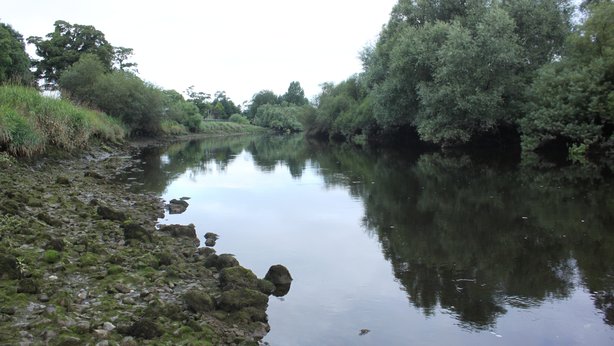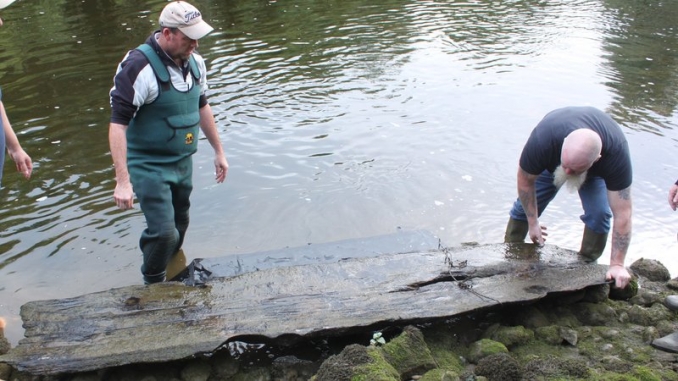Irish Neolithic logboat discovered in River Boyne
In June 2016 four anglers, Stephen Murphy, Kieran Mahar, William Gregory and David Johnston, found the remains of a prehistoric logboat in the River Boyne (An Bhóinn) in Ireland. A sample of the wood has now been radiocarbon dated to between 3,300-2,900BC. This coincides with the construction of the Neolithic passage tombs of the Brú na Bóinne including Knowth, Dowth and Newgrange in the Boyne Valley through which the river flows. The remains of the logboat consist of a 3m length of wood, which would have formed the base of the boat. It is believed the boat was originally more than 4m long and shaped out of the trunk of an oak tree using stone implements. The boats were used in Ireland for transport and fishing mainly along inland waterways.
The prehistoric logboat was found in the area of Oldbridge (An Seandroichead) on the River Boyne. The River Boyne is a waterway of historical, archaeological and remarkable mythical heritage. Flowing as it does through the Boyne Valley, past the Hill of Tara (the ancient capital of the High King of Ireland), Navan, Ardmulchan, the Hill of Slane, the ancient temples at Newgrange, Knowth and Dowth, Mellifont Abbey, and the medieval city of Drogheda. The River Boyne's name is derived from the Irish queen and goddess Bóann. Boann created the Boyne after she went to the magical Well to taste the water. She also challenged the power of the Well by reciting incantations while walking anti-clockwise around it. The spring then rose in enormous waves and pursued her until she was swept into the Irish Sea and drowned.
Boann, as well as being the goddess of the River Boyne, is according to the Lebor Gabála Érenn and Tain Bo Fraech, the sister of Befind and daughter of Delbáeth, son of Elada, of the Tuatha Dé Danann (supernatural beings in the native mythological and folkloric traditions of Ireland, Scotland and the Isle of Man). Her husband is variously Nechtan, Elcmar or Nuada Airgetlám. With her lover the Dagda (Meaning 'The Good God') who was an important father-figure and chieftain of the Tuatha Dé Danann, Boann is said to have bore Aengus. He is thought to have been a god of love, youth and poetic inspiration.







